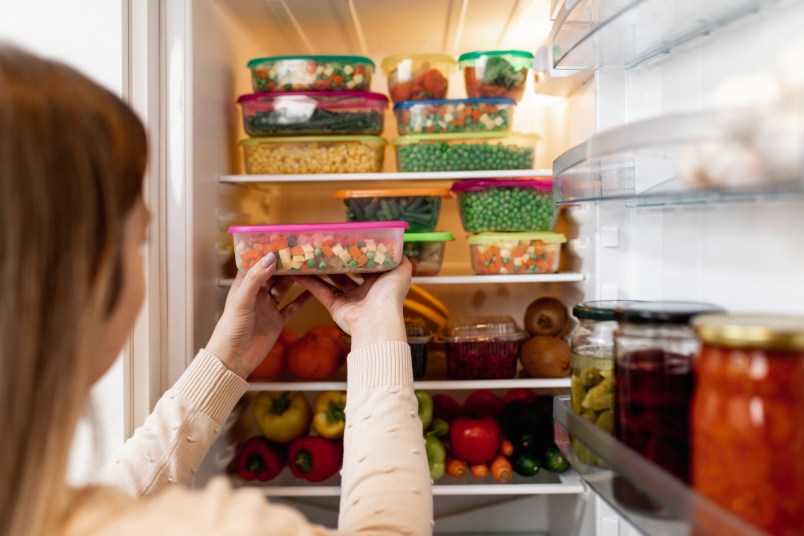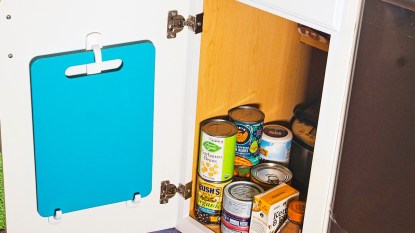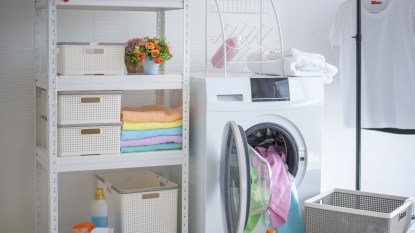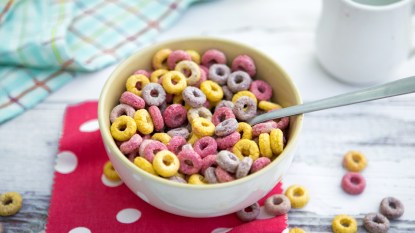How to Organize Your Fridge So Food Stays Fresh Through the Holidays and Beyond

If you’re about to tackle your Christmas food shop, you may be wondering how all that fresh produce, meat, seafood, and cheese is actually going to fit into your fridge.
Aside from making things virtually impossible to find, stuffing your fridge full of food in an unorganized manner and in incorrect zones can actually cause it to spoil faster, meaning that cream for your famous Pavlova may not even make it to Christmas Day.
From where to store the milk to make sure it remains fresh, to where to keep the fruit and veggies to keep them crisper for longer, leading nutritionist, Dr. Joanna McMillan shares some practical tips and tricks on where to store certain things to help eliminate fridge chaos this Christmas and beyond.
Christmas Food Storage Tips
- A well organized fridge will not only minimize food waste but save you money! The upper shelves will be slightly warmer so, ready to eat foods such as dips, cheese, and yogurt should live here.
- The door of the fridge experiences the greatest temperature fluctuations, particularly when the fridge door is being opened and closed frequently during the festive season. Store the most stable items here including mustards, chutneys, and sauces.
- Keep any Christmas leftovers in ready-to-go containers so it’s easy to make a quick snack.
- Ensure you keep cooked seafood separate from raw seafood and meat to prevent any cross-contamination.
- Store raw meat and fish in sealed containers on the bottom shelf of the fridge. This ensures that if there are any leaked juices, they won’t contaminate other items in the fridge.
- Store your fruit and veggies in the crisper as this helps to extend shelf life.
- Store your Christmas ham in a ham bag and only slice off small amounts at one time — it will keep for longer unsliced.
- Berries, grapes, citrus fruit, and apples are usually all ready to eat when you purchase them so they should go straight into the crisper.
Keep reading for year-round tips that will help your food last its longest.
Fridge Door
- The door of the fridge experiences the greatest fluctuations in temperature, particularly if the fridge is open and closed frequently. Therefore, store the most stable items here including mustard, chutney, and other condiments, butter, jam, drinks, nutrition supplements, and any medications requiring refrigeration.
- Ensure the medications are on the top door shelf, out of reach of younger children.
Top Shelves
The upper shelves will be slightly warmer, so ready to eat foods such as cheese and yogurt should live here.
Middle Shelves
- The middle shelves are cooler with less temperature fluctuation so keep unopened dairy here.
- Stock up on healthy snacks for the kids and store them at child-friendly eye level. Washed berries or cut up veggies and a tub of natural yogurt work a treat!
- Keep any leftovers in ready-to-go containers on the middle shelf.
Bottom Shelves
- Store raw meat and fish in sealed containers on the bottom shelf of the fridge. This ensures that if there any leaked juices, they won’t contaminate other items in the fridge. Yuck!
- Pop items with the shortest shelf life at the front of the fridge to remind you to use them before the expiration date — here, they’ll be easy to grab quickly at your next family barbecue.
Crisper Drawer
- Store your fruit and veggies in the crisper as this helps to extend their shelf life.
- Move the divider to suit your groceries and enable you to keep your fruit and veggies separate, as fruit gives off ethylene — a natural chemical in the plant involved in ripening the fruit — and this can cause the other produce to spoil more quickly.
- Berries, grapes, citrus fruit and apples are all ready to eat when you purchase them so they should go straight into the crisper.
- Let unripe fruits (mangos, pears, avocado, stone fruit, and tomatoes) ripen on the bench-top before they’re stored in the crisper.
Cheese Tips
Remove cheese from plastic wrap, rewrap in baking paper, and store together in a container. Plastic makes the cheese “sweat” and the plastic can leech unwanted chemicals into the cheese.
Soft cheese such as feta, ricotta, cream cheese, and cottage cheese are best left in their original containers, as these fresh cheeses have a shorter shelf life and need to be used up more quickly.
This article originally appeared on our sister site, Homes to Love.













